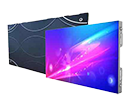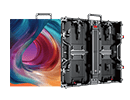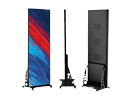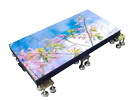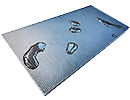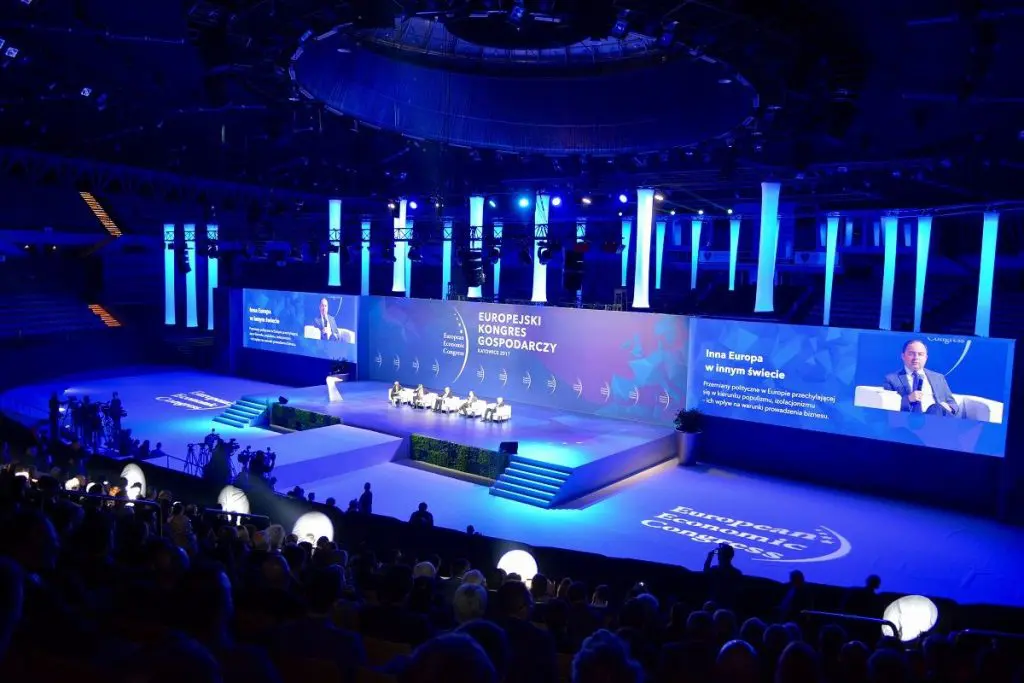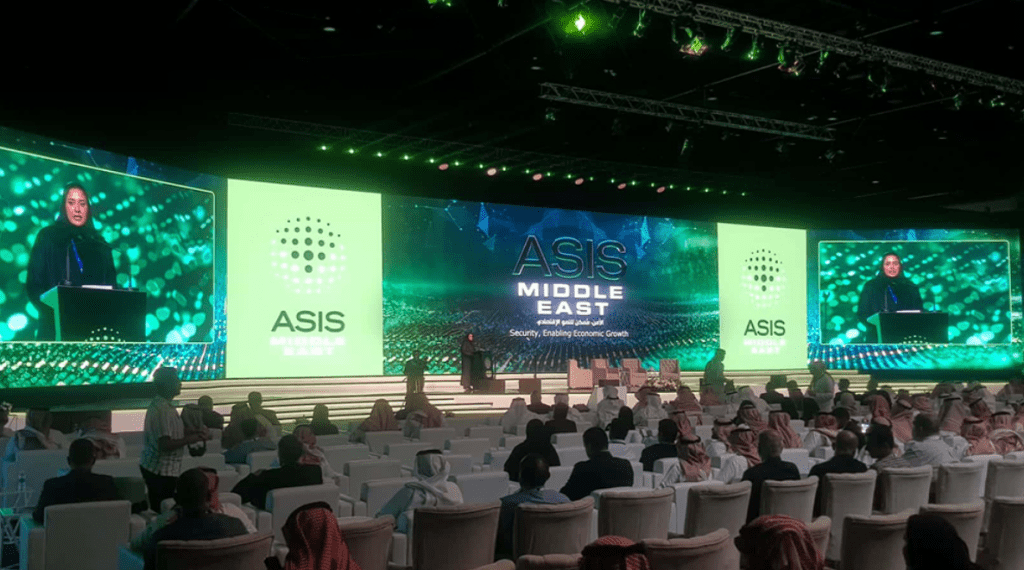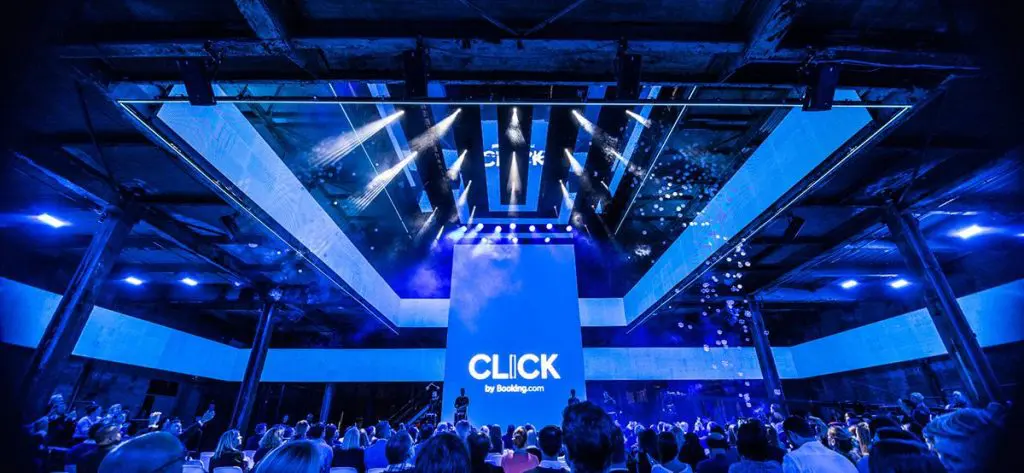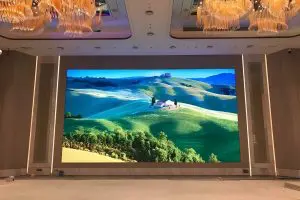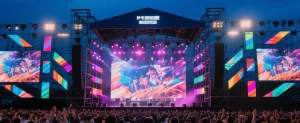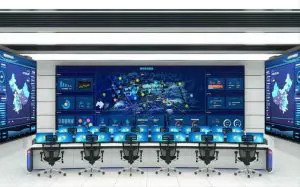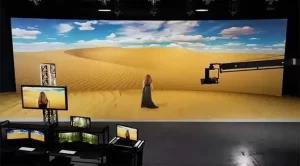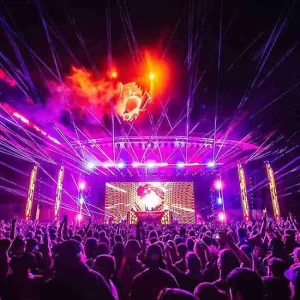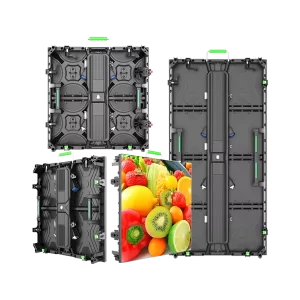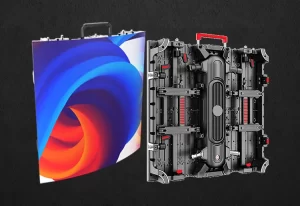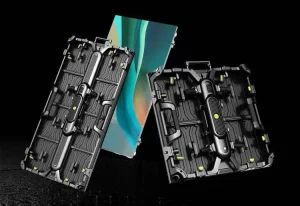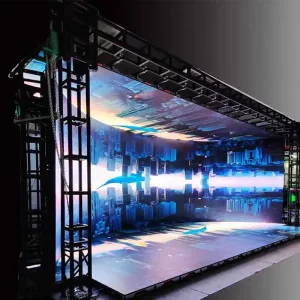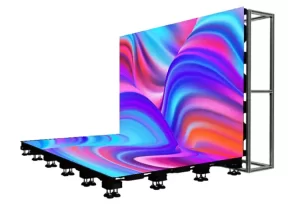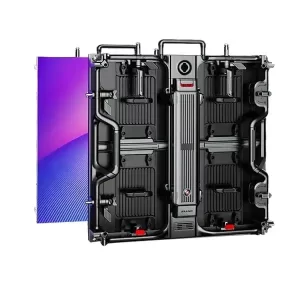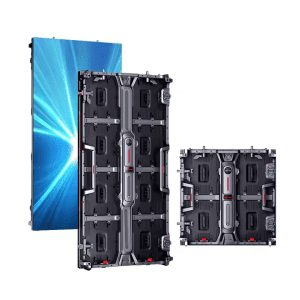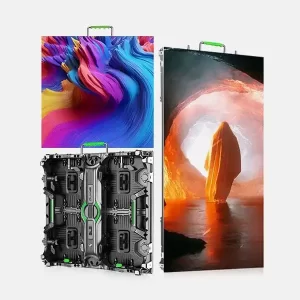What Is the Cost of Stage LED Screen: Ultimate Guide to Pricing, Factors, Types, and Buying Tips
Understanding what is the cost of stage LED screen is crucial for event planners, venues, and businesses investing in high-impact displays for concerts, theaters, conferences, and performances. A stage LED screen is a large, high-resolution display using LED technology to project videos, graphics, and live feeds on stages, offering immersive visuals with brightness and clarity. Prices can range from $500 to $4,000 per square meter depending on factors like size, resolution, and features, with the global LED display market projected to reach $31.5 billion by 2027 (source: MarketsandMarkets). Knowing what is the cost of stage LED screen helps avoid overpaying while ensuring quality and ROI.
What Is a Stage LED Screen?
A stage LED screen is a modular digital display system used on performance stages to enhance visuals with high-resolution content like live camera feeds, animations, and graphics. These screens are designed for dynamic environments, offering features like high refresh rates to prevent flickering during fast movements. Unlike traditional projectors, stage LED screens provide brighter, more vibrant images with seamless integration for large formats.
The cost varies widely based on type (indoor vs. outdoor, fixed vs. rental), but understanding what is the cost of stage LED screen starts with knowing the basics. According to Statista, the event LED market is growing at 10% CAGR, as screens become essential for immersive shows. For example, major tours like those by Taylor Swift use stage LED screens costing $100,000+ for backdrops, creating stunning effects for audiences of 50,000+.
These screens are scalable, with costs influenced by factors detailed below, making budgeting key to success.
Factors Influencing the Cost of Stage LED Screens
What is the cost of stage LED screen? It depends on several factors. Here’s a breakdown:
- Size and Area: Larger screens (e.g., 20m x 10m) cost more due to materials; price per m² decreases with scale.
- Pixel Pitch and Resolution: Finer pitches (P1.5) for close viewing increase costs by 50%.
- Brightness and Type: Outdoor high-nits models are 20-40% pricier.
- Type (Fixed vs. Rental): Rentals are cheaper short-term ($100–$300/day per m²).
- Features: Interactive or curved add 30% to costs.
- Installation and Maintenance: Professional setup adds $5,000–$20,000.
- Location and Shipping: International shipping can add 10-15%.
Expert Tip: For what is the cost of stage LED screen for concerts, budget $1,500–$3,000 per m² for high-quality models to ensure reliability.
Types of Stage LED Screens and Their Costs
Types affect pricing. Here’s a detailed overview:
- Indoor Stage LED Screens
Applications: Theaters, conferences.
Cost: $800–$2,000 per m².
Why: Lower brightness needs reduce price. - Outdoor Stage LED Screens
Applications: Festivals, open-air concerts.
Cost: $1,000–$3,000 per m².
Why: Weatherproofing adds cost. - Curved Stage LED Screens
Applications: Immersive backdrops.
Cost: $1,200–$2,500 per m².
Why: Flexible tech increases expense. - Rental Stage LED Screens
Applications: Temporary events.
Cost: $100–$300 per day per m².
Why: Short-term use lowers upfront cost. - High-Resolution Stage LED Screens
Applications: Broadcast-quality shows.
Cost: $2,000–$4,000 per m².
Why: Fine pitch drives up price. - Interactive Stage LED Screens
Applications: Audience participation.
Cost: $1,500–$3,500 per m².
Why: Touch tech adds premium.
| Type | Pixel Pitch Range | Average Cost per m² (USD) | Ideal Applications | Key Cost Factor |
|---|---|---|---|---|
| Indoor | P1.5–P3 | $800–$2,000 | Theaters | Resolution |
| Outdoor | P4–P8 | $1,000–$3,000 | Festivals | Weatherproofing |
| Curved | P2–P5 | $1,200–$2,500 | Concerts | Flexibility |
| Rental | P2.5–P6 | $100–$300 (per day) | Events | Temporary Use |
| High-Resolution | P1–P2 | $2,000–$4,000 | Broadcasts | Pixel Density |
| Interactive | P1.8–P3 | $1,500–$3,500 | Participatory Shows | Touch Features |
Key Features Affecting the Cost of Stage LED Screens
Features influence pricing:
- Pixel Pitch: Finer = higher cost for detail.
- Brightness: 5,000+ nits adds 20%.
- Refresh Rate: ≥3,840 Hz for smoothness, +10-15%.
- Durability: IP65+ for outdoor, +25%.
- Size: Economies of scale lower per m² cost.
Benefits of Investing in Stage LED Screens
- Immersive Visuals: Enhance shows.
- Durability: Long lifespan.
- Flexibility: Customizable.
- ROI: Boost ticket sales 20%.
Case: Ed Sheeran’s tours use them, increasing revenue 30%.
Applications of Stage LED Screens
- Concerts: Live feeds.
- Theaters: Backdrops.
- Conferences: Presentations.
- Festivals: Multi-stage.
- Corporate Events: Branding.
Technical Specifications and Cost Implications
| Specification | Low-Cost Range | High-Cost Range | Cost Impact |
|---|---|---|---|
| Pixel Pitch | P4–P10 | P1.2–P2.5 | +50% for fine |
| Brightness | 1,000–3,000 nits | 5,000–10,000 nits | +30% for high |
| Refresh Rate | <3,000 Hz | ≥3,840 Hz | +15% for smooth |
| IP Rating | IP54 | IP65+ | +25% for outdoor |
| Lifespan | 50,000 hours | 100,000+ hours | +20% for premium |
What Is the Cost of Stage LED Screen? Detailed Breakdown
What is the cost of stage LED screen? Average $800–$4,000 per m². Breakdown:
- Small (5m² indoor): $5,000–$10,000.
- Large (50m² outdoor): $50,000–$150,000.
- Rental: $100–$500 per day per m².
- Additional: Installation $5,000–$20,000; maintenance 5-10% annually.
Factors Raising Cost: Custom features (+20-40%). Savings Tip: Bulk purchases reduce 10-15%.
Value and Cost-Effectiveness Comparison of LED Display Screens (New Section)
When evaluating what is the cost of stage LED screen, it’s essential to compare value (overall benefits and long-term returns) and cost-effectiveness (price vs. performance/efficiency). Value focuses on qualitative advantages like durability and visual impact, while cost-effectiveness measures quantitative ROI, such as total ownership cost over time. High-value screens may have higher upfront costs but offer better longevity and savings, leading to superior sex价比 (cost-performance ratio). Below, we compare different types based on key metrics, using data from LEDinside and AVIXA to help you decide.
Value Comparison: High-End vs. Low-End LED Display Screens
Value is determined by factors like build quality, performance, and application fit. High-end screens (e.g., from brands like Samsung or Leyard) provide premium materials and features, offering greater reliability and impact, while low-end options (generic or budget models) cut corners for lower prices but risk frequent issues.
- High-End LED Display Screens:
- Value Highlights: Superior brightness (5,000+ nits), fine pixel pitches (P1.2–P2), 100,000+ hour lifespan, advanced features like AI calibration, and 3-5 year warranties. They excel in demanding applications like professional stages, where consistent performance justifies the investment.
- Pros: High ROI through reduced maintenance (save 30-50% long-term), better visual quality (40% higher engagement), and scalability for future upgrades.
- Cons: Higher initial cost (20-50% more).
- Example: A high-end outdoor stage screen might cost $3,000 per m² but last 10 years with minimal repairs, providing value in reliability for frequent events.
- Low-End LED Display Screens:
- Value Highlights: Basic functionality with coarser pitches (P4+), 50,000 hour lifespan, and 1-2 year warranties. Suitable for low-budget or temporary use.
- Pros: Affordable entry point, quick availability.
- Cons: Prone to failures (e.g., color fading after 2 years), higher energy use (20% more), and limited features, leading to frequent replacements.
- Example: A low-end indoor screen at $800 per m² might save upfront but require $500+ in annual repairs, reducing overall value.
Value Comparison Table:
| Aspect | High-End LED Screens | Low-End LED Screens | Value Winner |
|---|---|---|---|
| Lifespan | 100,000+ hours | 50,000 hours | High-End (Longer durability) |
| Visual Quality | 4K/High contrast | HD/Basic contrast | High-End (Better engagement) |
| Maintenance Cost | Low (Premium materials) | High (Frequent fixes) | High-End (Savings over time) |
| ROI Potential | High (40% engagement boost) | Medium (Basic performance) | High-End (Greater returns) |
| Initial Investment | $2,000–$4,000 per m² | $500–$1,500 per m² | Low-End (Budget-friendly start) |
Expert Insight: High-end screens offer better value for professional use, with a 3-5 year payback period through reduced downtime and energy savings. For hobbyists, low-end may suffice but expect 20-30% higher long-term costs.
Cost-Effectiveness Comparison: Balancing Price and Performance
Cost-effectiveness (sex价比) evaluates how much performance you get per dollar, considering initial cost, operating expenses, lifespan, and efficiency. We compare based on a 10m² screen over 5 years, assuming average use (8 hours/day).
- High Cost-Effectiveness (Premium Models):
- Initial Cost: $25,000 (e.g., P1.5 indoor with features).
- Operating Costs: $1,000/year (low energy, minimal maintenance).
- Total 5-Year Cost: $30,000.
- Performance Metrics: High res, 100,000 hours, 30% energy savings.
- Sex价比 Score: High (Low cost per hour of use: $0.06/hour; strong ROI from engagement).
- Medium Cost-Effectiveness (Mid-Range Models):
- Initial Cost: $15,000 (e.g., P3 outdoor basic).
- Operating Costs: $1,500/year (moderate maintenance).
- Total 5-Year Cost: $22,500.
- Performance Metrics: Good res, 75,000 hours, 20% savings.
- Sex价比 Score: Medium (Cost per hour: $0.08/hour; balanced for most users).
- Low Cost-Effectiveness (Budget Models):
- Initial Cost: $8,000 (e.g., P5 low-end).
- Operating Costs: $2,000/year (frequent repairs, high energy).
- Total 5-Year Cost: $18,000.
- Performance Metrics: Basic res, 50,000 hours, minimal savings.
- Sex价比 Score: Low (Cost per hour: $0.10/hour; risks outweigh savings).
Cost-Effectiveness Comparison Table (Per 10m² Screen Over 5 Years):
| Model Type | Initial Cost (USD) | Annual Operating Cost (USD) | Total 5-Year Cost (USD) | Lifespan (Hours) | Cost per Hour (USD) | Sex价比 Rating (1-10) |
|---|---|---|---|---|---|---|
| Premium | $25,000 | $1,000 | $30,000 | 100,000 | $0.06 | 9/10 (High value) |
| Mid-Range | $15,000 | $1,500 | $22,500 | 75,000 | $0.08 | 7/10 (Balanced) |
| Budget | $8,000 | $2,000 | $18,000 | 50,000 | $0.10 | 5/10 (Low long-term value) |
Expert Insight: Premium screens have the best sex价比 for frequent use, as their lower operating costs and longer life offset the higher initial price. For occasional events, mid-range offers good balance. Always calculate based on your usage—e.g., a concert venue might save $10,000/year with premium.
Comparison Example: A mid-range 20m² screen at $30,000 initial cost with $3,000 annual maintenance totals $45,000 over 5 years. A premium equivalent at $50,000 initial with $1,500 annual totals $57,500 but lasts longer and uses less energy, providing better value for high-use scenarios.
By comparing value and sex价比, you can align your choice with budget and needs, ensuring the screen delivers maximum returns.
Benefits of Investing in Stage LED Screens
- Immersive Visuals: Enhance shows.
- Durability: Long lifespan.
- Flexibility: Customizable.
- ROI: Boost ticket sales 20%.
Case: Ed Sheeran’s tours use them, increasing revenue 30%.
Applications of Stage LED Screens
- Concerts: Live feeds.
- Theaters: Backdrops.
- Conferences: Presentations.
- Festivals: Multi-stage.
- Corporate Events: Branding.
Technical Specifications and Cost Implications
| Specification | Low-Cost Range | High-Cost Range | Cost Impact |
|---|---|---|---|
| Pixel Pitch | P4–P10 | P1.2–P2.5 | +50% for fine |
| Brightness | 1,000–3,000 nits | 5,000–10,000 nits | +30% for high |
| Refresh Rate | <3,000 Hz | ≥3,840 Hz | +15% for smooth |
| IP Rating | IP54 | IP65+ | +25% for outdoor |
| Lifespan | 50,000 hours | 100,000+ hours | +20% for premium |
What Is the Cost of Stage LED Screen? Detailed Breakdown
What is the cost of stage LED screen? Average $800–$4,000 per m². Breakdown:
- Small (5m² indoor): $5,000–$10,000.
- Large (50m² outdoor): $50,000–$150,000.
- Rental: $100–$500 per day per m².
- Additional: Installation $5,000–$20,000; maintenance 5-10% annually.
Factors Raising Cost: Custom features (+20-40%). Savings Tip: Bulk purchases reduce 10-15%.
Buying Tips for Stage LED Screens
- Define Needs: Indoor/outdoor?
- Budget Breakdown: Factor all costs.
- Compare Brands: Samsung, LG for quality.
- Test Demos: Check in real conditions.
Installation and Maintenance Guide
- Planning: Assess stage.
- Mounting: Secure frames.
- Testing: Calibrate.
- Maintenance: Clean regularly.
Costs: $5,000–$20,000 for install.
Future Trends in Stage LED Screens
- AI content.
- Flexible designs.
- Sustainable tech.
FAQ: Common Questions on What Is the Cost of Stage LED Screen
- What is the cost of stage LED screen for concerts? $1,500–$3,000 per m².
- How does pixel pitch affect the cost of stage LED screen? Finer pitches increase price 50%.
- What is the average cost of rental stage LED screen? $100–$300 per day per m².

